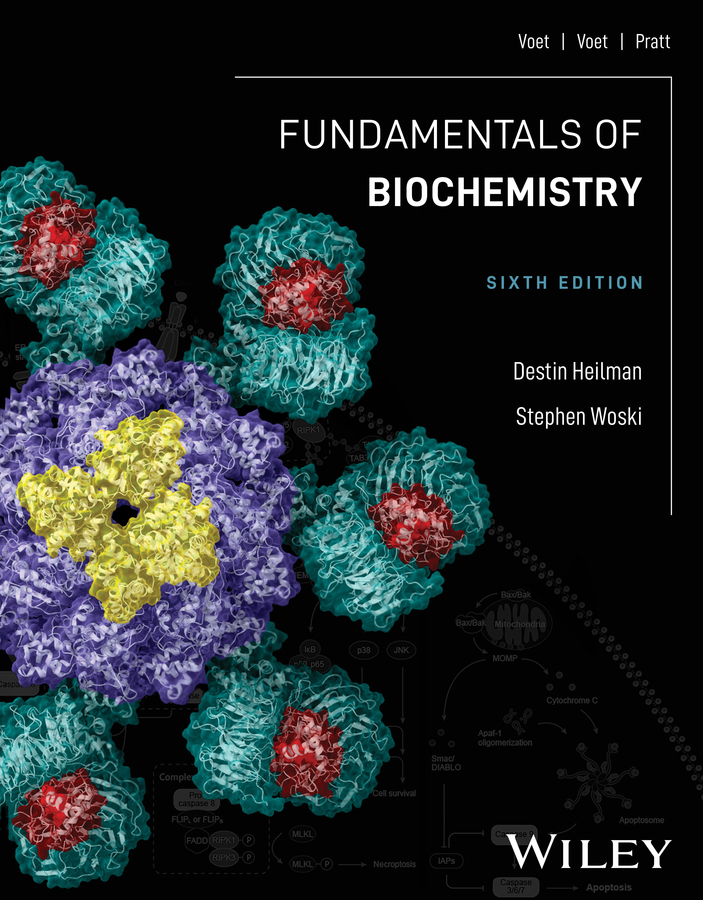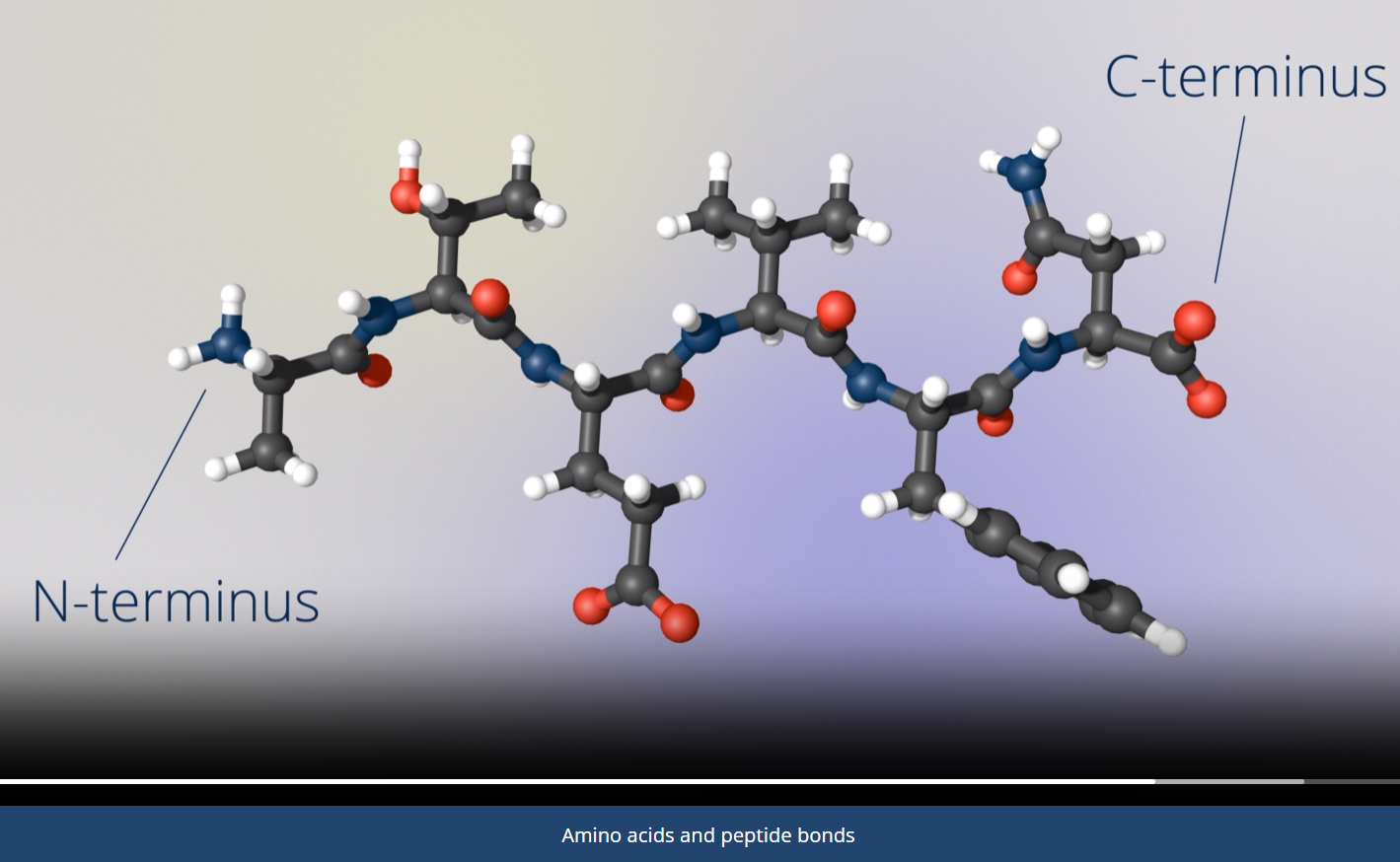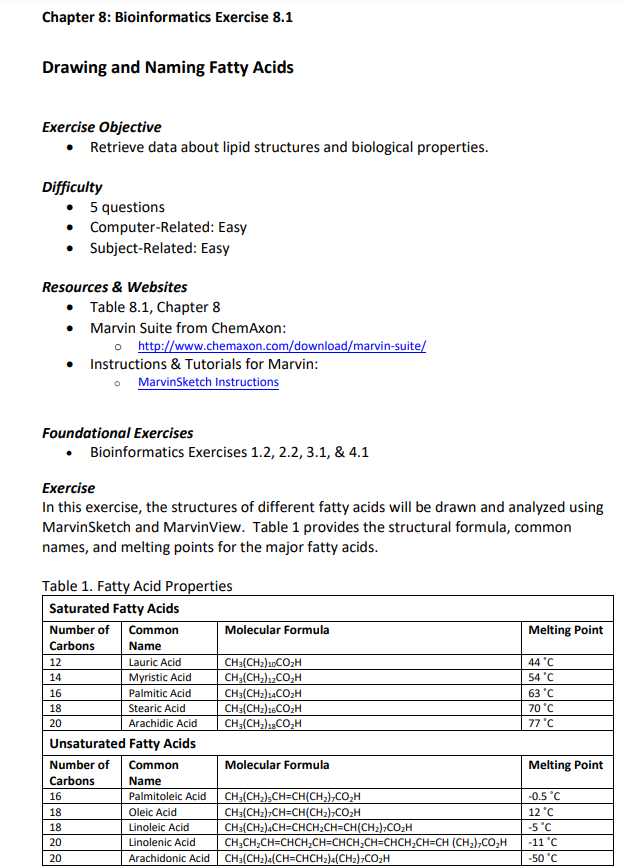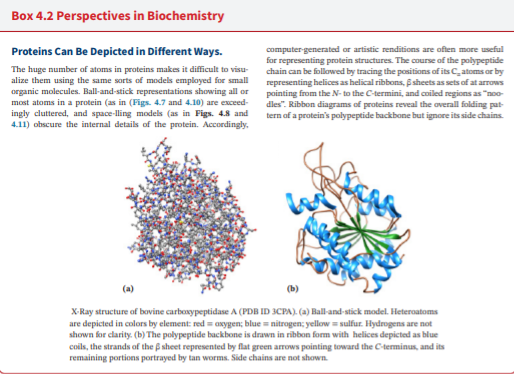
Voet, Fundamentals of Biochemistry: Life at the Molecular Level, 6th Edition
By Destin Heilman, Stephen Woski
Fundamentals of Biochemistry, 6th Edition, with new author team Destin Heilman and Stephen Woski, is completely revised for focus, readability, and currency. The updated WileyPLUS content contains a wealth of new interactives, animations, videos, and exercises to achieve student success.
This revision offers a solid biochemical foundation rooted in chemistry to prepare students for future scientific challenges. Its pedagogical focus remains on biochemistry’s key theme – the relationship between structure and function. The foundation of the text discusses the relationships between the monomeric units (amino acids, monosaccharides, nucleotides, and fatty acids) and the biomolecular structures they form.
The new author team continues the trusted pedagogy of the previous editions and presents approachable, balanced coverage relevant to human health and disease. Fundamentals of Biochemistry 6e includes stunning and enhanced visuals and new measurable learning objectives in each chapter section that provide a practical pathway to student learning and understanding.
Schedule a Demo Request Instructor AccountWant to learn more about WileyPLUS? Click Here

Guided Tours
These multipart animations present “big picture” concepts through animations, tutorials, and practice to help students better understand concepts that are difficult to grasp.

Bioinformatics Exercises
Written by Rakesh Mogul, Cal Poly Pomona, these short, assignable exercises introduce students to a rich variety of biochemical information and the software tools available on the internet, showing them how to mine this information and illuminating the connection between theory and applied concepts.
Sample Calculation Videos
Students come to biochemistry with different levels of math skills. These videos walk students through the Sample Calculations provided for fundamental equations throughout the course.

Figure Questions
To further underscore the importance of students’ ability to interpret various images and data, questions at the ends of figure captions encourage students to engage with the material and test their understanding of the process being illustrated more fully.
Animated Process Diagrams
Bring multi-step figures to life, breaking them down into discrete steps that students can navigate at their desired pace.
What’s New to This Course
- NEW! The 6th edition includes new media resources (animations or videos) in WileyPLUS for the 10 most difficult topics for students:
- Ch. 1 video focuses on open systems and non-equilibrium steady state.
- Ch. 2 animation focuses on hydrophobic effect.
- Ch. 5 animation focuses on structure = function.
- Ch. 6 animation focuses on the link between primary structure and organization of R groups in 3D space.
- Ch. 9 animation focuses on the true nature of membrane dynamics (liquid crystalline model and consequences).
- Ch. 11 video focuses on energy of ES and EP not just S and P.
- Ch. 12 video focuses on how kinetics informs mechanics/allostery.
- Ch. 14 video focuses on “Coupled reactions” confusion + non-standard dG to push or pull pathways.
- Ch. 16 animation focuses on coordinate control of glycolytic flux.
- Ch. 25 animation focuses on the Holliday Junction complex and resolution.
- NEW! The 6th Edition includes new 3D (rotating) interactive figures within the Wiley Reader eText in WileyPLUS. These interactive figures are consistent in coloring across structures and help students accurately understand the structures and their parts. These updated figures reflect the latest knowledge of biochemical structures and the discoveries that have changed that understanding. Some examples include:
- Fig 8.19 CryoEM of human ABCG2 transporting a steroid
- Fig 11.4 CryoEM of insulin receptor ectodomain in inactive and active conformations CH11BiF F-actin/myosin
- Fig 15.4 CryoEM of pyruvate dehydrogenase complex
- Fig 16.7 CryoEM of respiratory megacomplex
- Fig 19.2 CryoEM of 26S Proteosome (catches protein being fed into complex)
- Fig 21.14 Xray of dUTPase
- Fig 23.11 CryoEM of MutS dimer on DNAs
- Fig 25.25 Process Diagram of translation initiation
- Fig 26.23 CryoEM of histone H1 with nucleosome particle
- NEW! Check your Understanding Questions: These interactive questions in the Wiley Reader target tricky concepts or important foundational information to assist students in self-assessment (understanding what they don’t know.) They are designed to catch the attention of students at strategic points when critical information is presented.
- NEW! Case Studies w/ Assessment: These brief case studies are based on scientific journal articles and provide a scenario, required prerequisites, and PDF assessment questions. The answer file is available in WileyPLUS.
- NEW! Check Point Questions: These are robust sets of study questions that appear at the end of every section for students to check their mastery of the section’s key concepts. They encourage students to review the chapter to reinforce their understanding, a process that helps them develop confidence.
Dr. Stephen Woski, The University of Alabama, Department of Chemistry and Biochemistry, Associate Professor
EDUCATION:
B.S. Emory University, 1986
P.h.D. University of Michigan, 1991
NIH Postdoctoral Fellow, California Institute of Technology, 1991-1994
Since joining the faculty at Alabama in 1994, Dr. Woski has focused on research and education at the interface between biochemistry and organic chemistry at both the undergraduate and graduate levels. In research, he has focused on the application of the tools of synthetic organic chemistry to address problems in nucleic acid biochemistry. One current research project involves the preparation of novel nucleosides and their incorporation into synthetic nucleic acids to address biophysical questions into base-base interactions. A second project involves the characterization of chromium adducts of DNA to elucidate the mechanism behind chromate carcinogenicity. Dr. Woski has mentored 25 doctoral and master’s students and >80 undergraduate students in research. He has actively worked to develop pipelines to broaden participation in “STEM” fields through involvement in Research Experiences for Undergraduates, Graduate Assistance in Areas of National Need, and Louis Stokes Alliance Bridge He programs. He has taught chemistry courses from the introductory through graduate levels. He has been involved in the creation of a new active-learning biochemistry laboratory course, a graduate literature and presentation course, and an integrated foundational core graduate course in structure and reactivity. Dr. Woski also served as Director of Graduate Studies in the Department of Chemistry & Biochemistry for 11 years. Dr. Woski frequently travels to locations throughout the world where he annoys his family by stopping to take photographs of landscapes and architecture while never missing an ancient Roman historical site.
Dr. Destin Heilman, Worcester Polytechnic Institute, Chemistry and Biochemistry, Professor of Teaching
EDUCATION:
B.S. Pennsylvania State University, 2000
Ph.D. University of Massachusetts Medical School, 2006
Dr. Heilman is a faculty member at the Worcester Polytechnic Institute, a national leader in project-based education. Since 2006, he has engaged in extensive pedagogical innovation in Chemistry and Biochemistry courses and in undergraduate capstone projects. His disciplinary research focuses on the discovery and characterization of novel virus proteins that have once-selective toxicity. His focus on understanding these proteins has led to the development of new techniques for studying cell-selective activities and the characterization of pathways that induce programmed cell death in cancer. Leveraging his passion for teaching alongside his research, he has advised hundreds of undergraduate students in his laboratory and has developed impactful pedagogical methods in project-based, integrative learning. Dr. Heilman has been a faculty mentor to many teams from other universities as part of the Center for Project-Based Learning at Worcester Polytechnic Institute, and he routinely delivers workshops in the development of outcomes-based design of authentic projects in the classroom and laboratory. Dr. Heilman has also developed and directed several local and national-level summer outreach programs including those dedicated to increasing opportunities for underrepresented students. He is also an accomplished woodworker, astrophotographer, and musician.
1 Introduction to the Chemistry of Life
The Origin of Life
Cellular Architecture
Thermodynamics
Problems
2 Water
Physical Properties of Water
Chemical Properties of Water
Problems
3 Amino Acids
Amino Acid Structure
Stereochemistry
Amino Acid Derivatives
Polypeptides and Proteins
Problems
4 Proteins: Three-Dimensional Structure
Secondary Structure
Tertiary Structure
Quaternary Structure and Multiprotein Complexes
Protein Folding and Unfolding
Biochemistry in Focus: Oxygen Transport
Problems
5 Carbohydrates
Monosaccharides
Polysaccharides
Glycoproteins
Problems
6 Nucleotides, Nucleic Acids, and Genetic Information
Nucleotides and Polynucleotides
Nucleic Acid Structure: DNA
Nucleic Acid Structure: RNA
Problems
7 Lipids and Biological Membranes
Lipid Classification
Lipid Bilayers
Membrane Proteins
Membrane Structure and Assembly
Problems
8 Membrane Transport
Thermodynamics of Transport
Passive-Mediated Transport
Active Transport
Problems
9 Enzymatic Catalysis
General Properties of Enzymes
Enzymes Work by Lowering Activation Energy
Mechanisms
Lysozyme
Serine Proteases
Problems
10 Enzyme Kinetics, Inhibition, and Control
Reaction Kinetics
Enzyme Inhibition
Control of Enzyme Activity
Biochemistry In Focus: Enzymes as Targets for Drug Design
Problems
11 Biochemical Signaling
Hormones
Receptor Tyrosine Kinases
Heterotrimeric G Proteins
The Phosphoinositide Pathway
Biochemistry in Focus: Chemical Signaling and Movement
Problems
12 Introduction to Metabolism
Overview of Metabolism
“High-Energy” Compounds
Oxidation–Reduction Reactions
Experimental Approaches to the Study of Metabolism
Problems
13 Glucose Catabolism
Overview of Glycolysis
The Reactions of Glycolysis
Metabolism of Hexoses Other than Glucose
Fermentation: The Anaerobic Fate of Pyruvate
Gluconeogenesis
Regulation of Glycolysis and Gluconeogenesis
The Pentose Phosphate Pathway
Problems
14 Glycogen Metabolism and Gluconeogenesis
Glycogen Breakdown
Glycogen Synthesis
Control of Glycogen Metabolism
Other Carbohydrate Biosynthetic Pathways
Problems
15 Citric Acid Cycle
Overview of the Citric Acid Cycle
Synthesis of Acetyl-SCoenzyme A
Enzymes of the Citric Acid Cycle
Regulation of the Citric Acid Cycle
Reactions Related to the Citric Acid Cycle
Problems
16 Electron Transport and Oxidative Phosphorylation
The Mitochondrion
Electron Transport
Oxidative Phosphorylation
Control of Oxidative Metabolism
Biochemistry in Focus: The Mitochondrion and Cell Death
Problems
17 Photosynthesis
Chloroplasts
The Light Reactions
The Dark Reactions
Problems
18 Lipid Metabolism
Lipid Digestion, Absorption, and Transport
Fatty Acid Oxidation
Fatty Acid Biosynthesis
Synthesis of Other Lipids
Cholesterol Metabolism
Problems
19 Amino Acid Metabolism
Protein Degradation
Amino Acid Deamination and the Urea Cycle
Breakdown of Amino Acids
Amino Acid Biosynthesis
Other Products of Amino Acid Metabolism
Biochemistry in Focus: Nitrogen Fixation
Problems
20 Mammalian Fuel Metabolism: Integration & Regulation
Organ Specialization
Hormonal Control of Fuel Metabolism
Metabolic Homeostasis: The Regulation of Energy Metabolism, Appetite, and Body Weight
Disturbances in Fuel Metabolism
Problems
21 Nucleotide Metabolism
Synthesis of Purine Ribonucleotides
Synthesis of Pyrimidine Ribonucleotides
Formation of Deoxyribonucleotides
Nucleotide Degradation
Problems
22 DNA Replication
Overview of DNA Replication
Prokaryotic DNA Replication
Eukaryotic DNA Replication
Problems
23 DNA Repair and Recombination
DNA Damage
DNA Repair
Recombination and Transposons
Problems
24 Transcription and RNA Processing
Prokaryotic RNA Transcription
Transcription in Eukaryotes
Posttranscriptional Processing
Problems
25 Protein Synthesis
The Genetic Code
Transfer RNA and Its Aminoacylation
Ribosomes
Translation
Posttranslational Processing
Problems
26 Regulation of Gene Expression
Genome Organization
Regulation of Prokaryotic Gene Expression
Regulation of Eukaryotic Gene Expression
The Cell Cycle, Cancer, Apoptosis, and Development
Appendix: Methods

